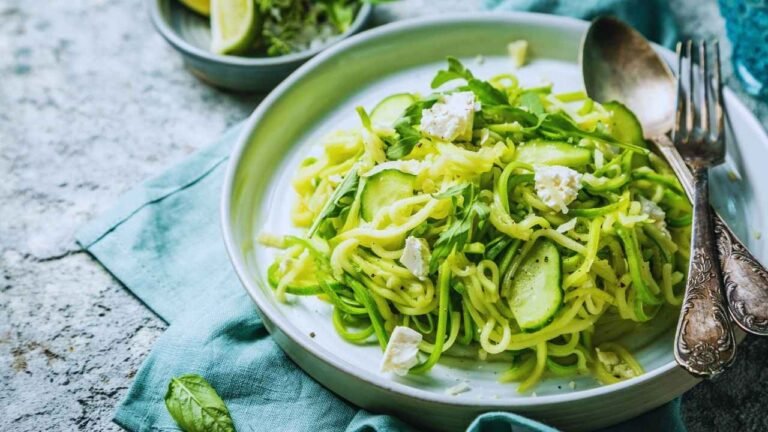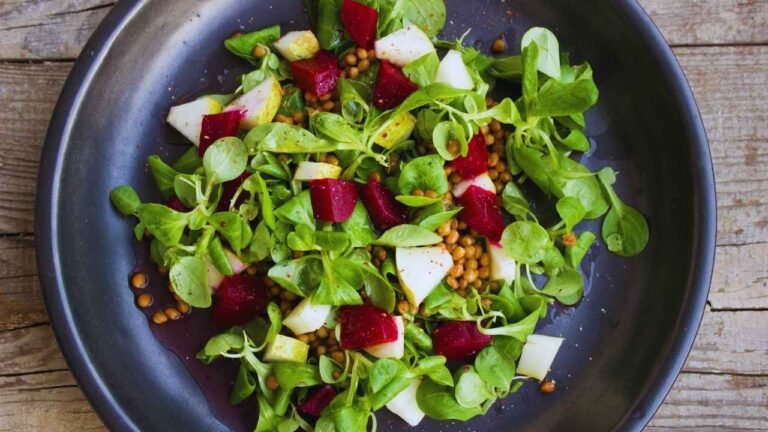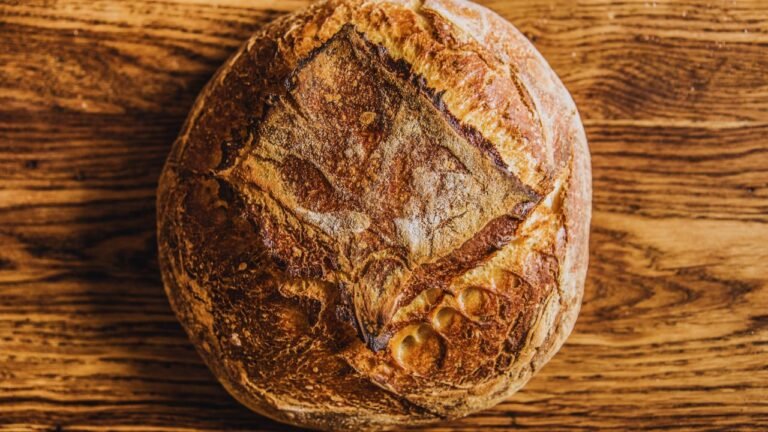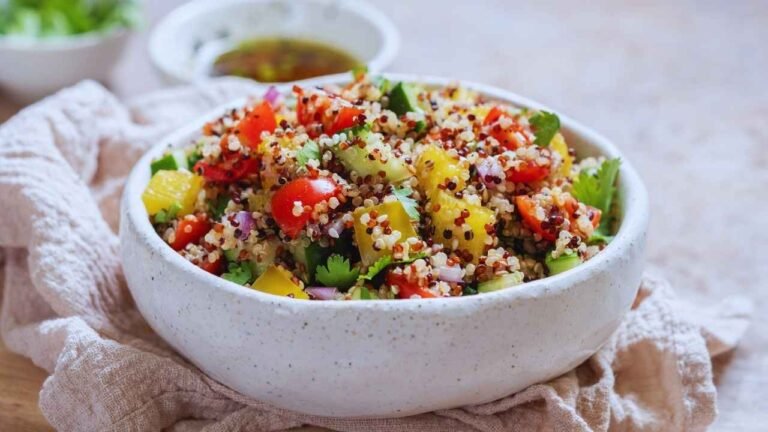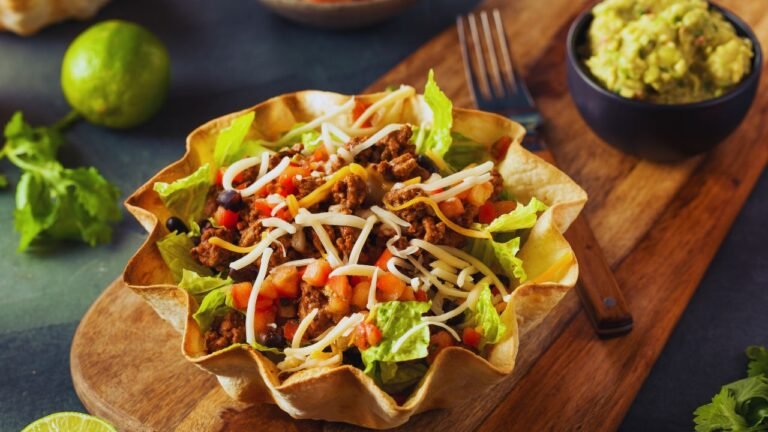How to Make Chinese Chicken and Broccoli: Better Than Takeout (20-Minute Recipe)
Did you know you can make restaurant-quality Chinese chicken and broccoli in 30 minutes? That’s quicker than waiting for takeout to arrive!
And even better, this classic Chinese chicken and broccoli recipe is not only quick — it’s also a healthy option, loaded with protein and vital vitamins. Whether you’re more inclined towards the tender bite of chicken breast or the juicier texture of chicken thighs, this dish is an ultra-authentic treat made even easier through its signature brown sauce — essentially a mix of rich soy sauce and sweet oyster sauce to create that ideal umami flavor.
Not only can you add your favorite vegetables to this stir-fry, but you can make it gluten-free — just use tamari instead of regular soy sauce. In fact, after one taste of this simple Chinese chicken and broccoli recipe, you’ll see why this stir-fry is a weeknight dinner favorite for busy families everywhere.
So, are you ready to make your own restaurant-quality Chinese chicken and broccoli at home? Let’s get cooking!
Essential Ingredients for Restaurant-Style Chinese Chicken and Broccoli
The secret of his chicken and broccoli lies in the freshness of the ingredients. Let’s take a closer look at each element that brings this dish together.
Key Sauce Components and Substitutions
This classic dish is built on a base of the signature brown sauce. Oyster sauce is the base ingredient to provide that umami hit. Additionally, you will need both types of soy sauce, the regular and dark, to give your dish the rich caramelized color.
For the perfect sauce blend, you’ll need:
- Shaoxing wine – adds depth (substitute with chicken broth if avoiding alcohol)
- Sugar or honey – balances saltiness
- Cornstarch – creates the ideal thickness
- Fresh ginger and garlic – essential aromatics
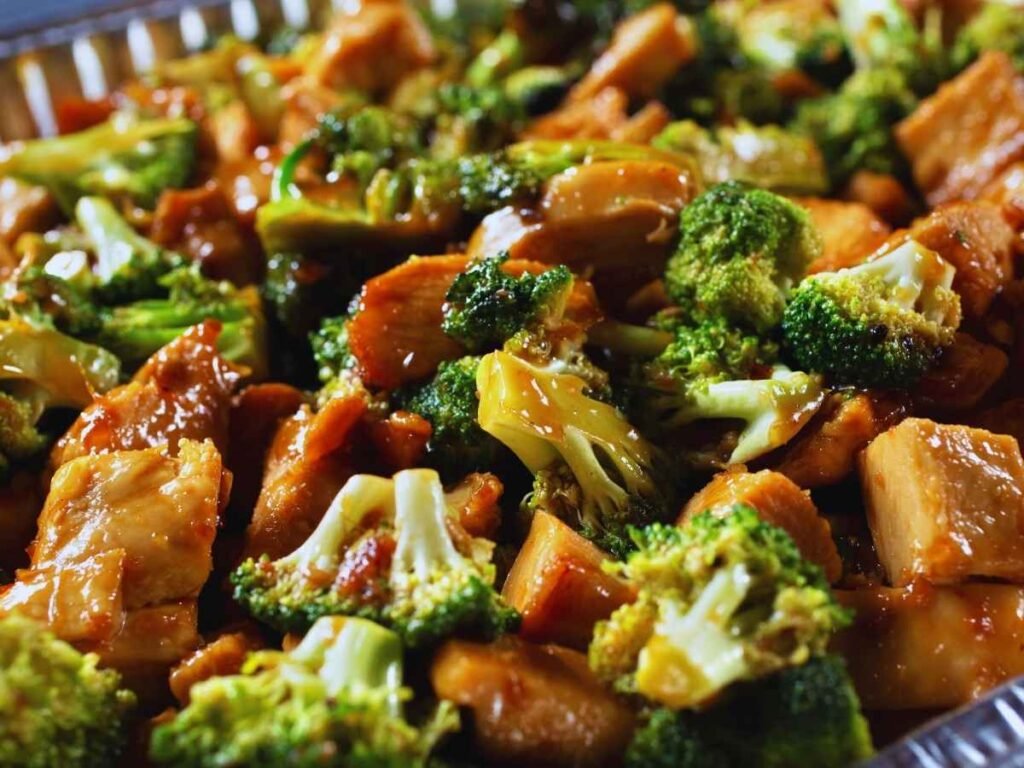
Best Cuts of Chicken to Use
Although many Chinese restaurants use chicken breast — to please American tastes — chicken thighs produce better results. Specifically, thighs contain more fat, which makes them more forgiving of cooking, and inherently more flavorful. Alternatively, you could use chicken breast, just make sure to marinate the chakki (piece of chicken) for 30 minutes or more to ensure tenderness.
Fresh vs Frozen Broccoli Tips
For the best fresh broccoli, choose tight, compact florets that have a bright green color. Thus, steer clear of stems that seem overly long and stiff — a sign of over-maturity. The florets should be closely packed and free of yellowing.
If you’re working with frozen broccoli, you’ll still get great results. Frozen options are especially good for stir-frying, and they’re often pre-cut, which is a time-saver. For perfect texture, steam your broccoli briefly before adding it to the stir-fry — it’ll be crisp-tender and vibrant green when you finish cooking.
Master the Chinese Restaurant Velveting Technique
The key to Chinese chicken and broccoli like you’d get at a restaurant is a technique called velveting. This pro technique makes sure your chicken doesn’t dry out while cooking.
How to Properly Tenderize Chicken
The best velveting technique combines cornstarch, liquid, and oil to achieve both maximum tenderness and flavor absorption. Give yourself the best chance at success by slicing your chicken thin and evenly. After that, you’ve got two solid choices:
Cornstarch Method:
- Mix seasoning (soy sauce or oyster sauce)
- Add a dash of sesame oil
- Incorporate cornstarch by the tablespoon
- Coat chicken thoroughly
Baking Soda Method:
- Use 3/4 teaspoon baking soda per 250g/8oz chicken
- Coat evenly
- Rinse thoroughly after marinating
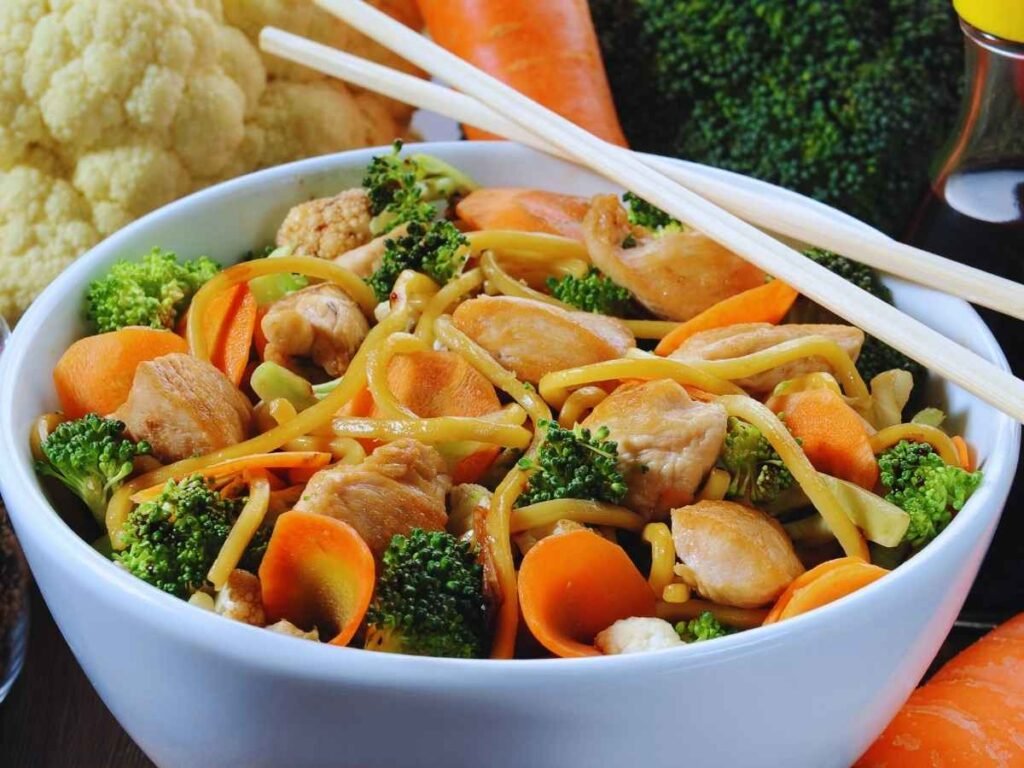
Optimal Marination Times
In short, how long you marinate depends on the chicken cut and method you’re using. For pieces of boneless chicken, 15-20 minutes usually gives good results. And top of mind when it comes to timing:
- Sliced chicken: 20 minutes minimum
- Bite-sized pieces: 30 minutes
- Maximum time: 24 hours in refrigerator
Common Velveting Mistakes to Avoid
For that optimal velvety mixture, keep an eye out for these key points:
First, avoid over-marinating. While you might think longer is better, soaking chicken in marinade for longer than 24 hours can cause the fibers in the meat to break down, leading to mushy texture.
Second, controlling temperature is essential. When you velvet chicken and stir-fry it, make sure your wok is sufficiently heated and smoking slightly. So, add oil to coat the surface, then sear the chicken for precisely 20 seconds, stir-frying briefly, until opaque.
Lastly, keep in mind that chicken breast has different needs than thighs. Thigh meat is inherently more tender and juicy and so doesn’t always require velveting. For breast meat, on the other hand, achieving that signature restaurant-quality tenderness means velveting properly.
Perfect Your Stir-Fry Timing and Temperature
The success of your Chinese chicken and broccoli recipe hinges on mastering the perfect stir-fry technique. Initially, let’s explore the essential elements that make restaurant-style stir-frying possible at home.
Proper Wok Hei Technique
Wok hei, or “breath of the wok,” imparts that signature smoky restaurant taste to your stir-fry. To obtain true wok hei, heat your wok slowly until it’s shrieking hot and just starting to smoke. Then, pour cold oil immediately before reaching for your ingredients — this stops chemical decomposition from high heat. Yes, the quantity of oil matters: Too much leads to deep-frying; too little won’t produce proper wok hei.
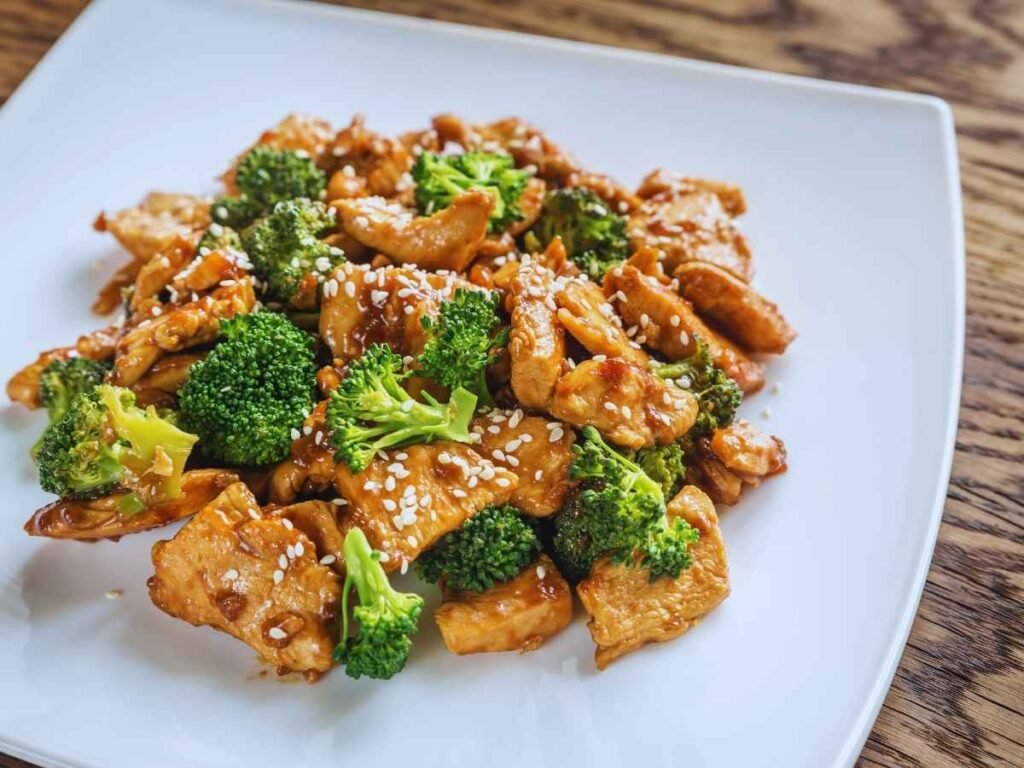
When to Add Each Ingredient
For perfect timing in your stir-fry, follow this sequence:
- Start with aromatics (garlic, ginger) – cook for 30 seconds
- Add harder vegetables (carrots, onions) – allow longer cooking time
- Introduce protein – cook until 75% done
- Add softer vegetables (mushrooms, sugar snaps)
- Finish with delicate items (bean sprouts)
Managing Heat Levels
Controlling heat is key to getting results like a restaurant. Professional kitchens work with powerful “volcano” burners that crank out 75,000 BTUs — roughly 10 times the heat of most home stoves. To help counteract lower home heat levels:
- Preheat your wok for 5-10 minutes over maximum heat
- Cook proteins in small batches (no more than 8 ounces at once)
- Allow the wok to reheat between batches
- Keep ingredients moving constantly through different heat zones
To put it in a nutshell, managing heat right begins with spreading the meat in a single layer and leaving it undisturbed for one minute to cook on the first side. Also, be consistent with cutting your vegetables and make sure they’re totally dry before going into the wok. Also, don’t overcrowd — if you can’t stir your ingredients without spilling, you’ve put in too much.
To help, arrange all ingredients within arm’s reach before you begin. Keep in mind that stir-frying is a quick business — all of it should take no more than 15 minutes. By keeping the heat high throughout, you’ll achieve that hard-to-come-by restaurant-quality texture: crunchy on the outside, tender on the inside.
Create the Perfect Chinese Brown Sauce
The right Chinese brown sauce — what elevates your stir-fry from good to great. Instead of buying store-bought, making your own sauce lets you design flavors to your own taste.
Sauce Consistency Tips
Start with the cornstarch slurry ratio: 2 tablespoons cornstarch to 2 tablespoons water. For the base sauce, combine:
- Dark soy sauce – for rich color
- Regular soy sauce – for saltiness
- Oyster sauce – for umami depth
- Shaoxing wine – for complexity
- Sesame oil – for nutty aroma
- Sugar – for balance
- Chicken stock – for body
You’re basically guessing a little, with the science part being how your cornstarch slurry is most properly incorporated into your starch. Dribbling in the mixture, keep the sauce stirring as it simmers for 10-15 seconds until it’s gravy-like.
Balancing Flavors
The Chinese art of making sauce rests on five fundamental flavors: sourness, sweetness, bitterness, pungency and saltiness. Overall, salt amplifies sense of taste, though soy sauce is likewise a significant salty fixing.
To achieve restaurant-quality results:
- Start with less seasoning than you think you need
- Add dark soy sauce gradually for color adjustment
- Include a touch of sugar to cushion other flavors
- Incorporate fresh ginger to neutralize any unwanted tastes
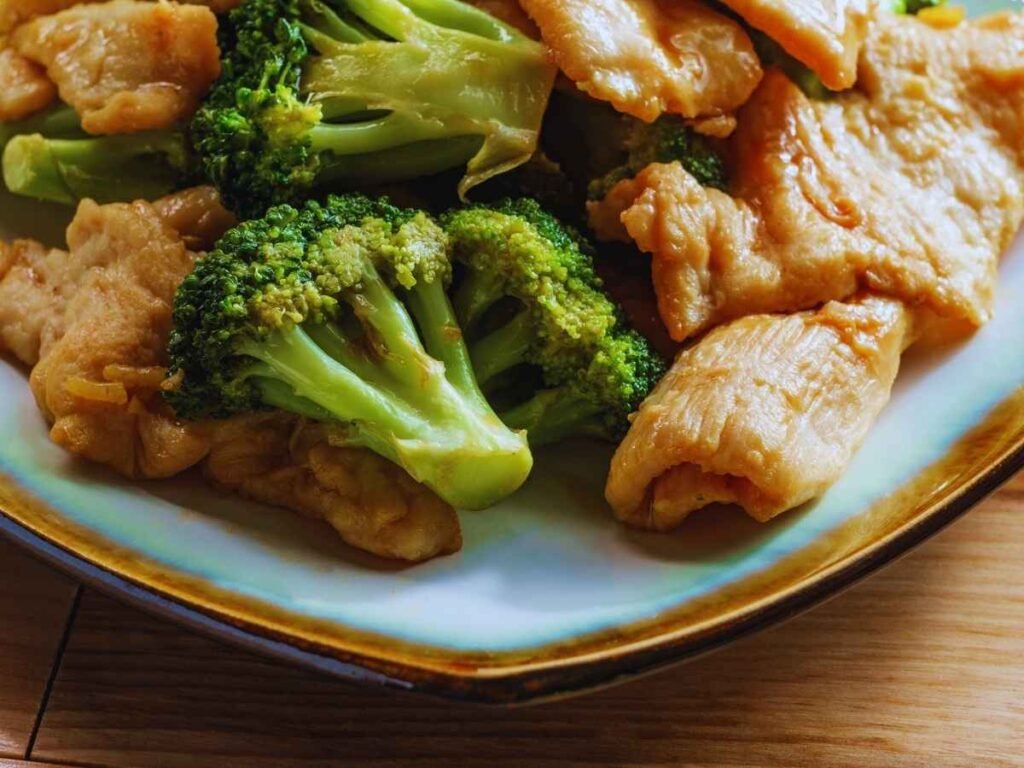
Troubleshooting Sauce Issues
Second, identify common sauce issues, with the fixes. You sauce may congeal when cool, but that is perfectly normal and will go back to a liquid state when warm. But if your sauce has turned:
Too Thin: Mix in more cornstarch slurry, a few tablespoons at a time until desired thickness Too Thick: Add more chicken stock or water gradually Too Salty: Cast to more sugar or dilute with stock Too Sweet: Add a bit of rice vinegar or more soy sauce
For best results, keep any unused sauce covered in a container in your fridge for no more than a week. Don’t freeze the thickened sauce, freeze the unthickened, and add cornstarch when reheating.
Professional Plating and Serving Suggestions
Plating Hacks to Make Your Homemade Chinese Chicken and Broccoligo from Basic to Bougie So, first, let’s find out how to serve this classic at restaurant-worthy presentation levels.
Garnishing Tips
Most importantly, the right adornments can elevate your dish Gorgeous overall. Use these adornment elements that look professional —
- Fresh chopped scallions for color and flavor
- Toasted sesame seeds for texture and visual interest
- Crushed toasted nuts for added crunch
- Fresh herbs for brightness and aroma
For best results, prepare your garnishes in advance and have them ready to sprinkle at the moment of serving. Essentially, the garnishes should enhance and not overpower the dish.
Rice Pairing Guide
Base of your plate begins with right rice choice. Think classic pairs like:
| Rice Type | Best For |
|---|---|
| Jasmine Rice | Traditional serving |
| Brown Rice | Healthier option |
| White Rice | Family-style meals |
As a result of proper rice pairing, your sauce will have the ideal base to shine. In addition to serving plain rice, you can spoon the chicken mixture and extra sauce over the rice for enhanced flavor.
Restaurant-Style Presentation
And if you want to serve a side of functional authenticity to that greasy lunch cuisine, you’re down to two main styles of Chinese restaurant presentation:
Family-Style Service When in doubt, serve your dish family-style, because that’s what is reflected in the traditional Asian dining culture. For presenting family-style:
- Use esthetically pleasing serving dishes
- Cut proteins and vegetables into manageable portions
- Arrange elements with contrasting colors
- Place sauce boats separately for customization
Individual Plating Second, for a modern approach to individual servings:
- Center the rice on each plate
- Position the chicken and broccoli mixture carefully
- Drizzle sauce artfully around the plate
- Add garnishes last for maximum visual impact
Serve your Chinese chicken and broccoli immediately after cooking for best temperature control. Above all, timing is key — most components can be prepared ahead of time, except for the last ingredients that need to be stir-fried and served immediately.
A fresh fruit plate is a true Chinese dinner party tradition and the most authentic dinner party dessert option. This casual finish also pairs beautifully with the savory mains.
If entertaining at a larger scale, here are some professional serving tips:
- Prepare garnishes and rice in advance
- Keep plates warm before serving
- Position all serving utensils strategically
- Arrange communal dishes in an easily accessible pattern
Keep in mind that presentation matters in terms of not only aesthetics but the dining experience. With careful plating details, your Chinese chicken and broccoli at home can match any restaurant.
Conclusion
Once you learn the skill behind these key methods, making restaurant-style Chinese chicken and broccoli at home is easy. Equipped with the right ingredients, proper velveting techniques and expert-level stir-frying skills, you’re going to be making dishes that can beat your favorite takeout places.
Success is all about being prepared and having the timing. Begin with quality ingredients, apply proper heat levels during cooking and be mindful of the viscosity of your sauces. Finally, the single most important step, velveting: This technique on its own turns plain chicken into the kind that’s tender and worthy of a restaurant.
Take your time to refine each component, from what goes into the sauce to what it looks like on the plate. Before long, this 20-minute recipe will be in regular rotation for you once a week, cost less to make and yield healthier, fresher results than takeout!
How to Make Chinese Chicken and Broccoli: Better Than Takeout (20-Minute Recipe)
Course: Side dishCuisine: ChineseDifficulty: Easy4
servings10
minutes10
minutes280
kcalChinese Chicken and Broccoli — A quick stir-fry takes just 20 minutes, with tender chicken, crisp broccoli, and a rich, savory brown sauce. Better than takeout and great for busy weeknights!
Ingredients
1 lb chicken thighs or breast, thinly sliced
2 cups broccoli florets (fresh or frozen)
2 tbsp oyster sauce
1 tbsp light soy sauce
1 tbsp dark soy sauce
1 tbsp Shaoxing wine (or chicken broth)
1 tsp sugar or honey
2 tsp cornstarch (plus more for velveting)
1 tsp sesame oil
1 tsp fresh ginger, minced
2 garlic cloves, minced
2 tbsp vegetable oil
¼ cup chicken broth or water
Directions
- Velvet the Chicken: Marinate sliced chicken in 1 tbsp soy sauce, 1 tbsp cornstarch, and 1 tsp sesame oil. Let sit 20 minutes.
- Prepare Sauce: Mix oyster sauce, soy sauces, wine, sugar, cornstarch, and broth in a small bowl.
- Cook Broccoli: Steam or blanch broccoli until crisp-tender (about 2 minutes).
- Stir-Fry Chicken: Heat wok until hot. Add oil and cook chicken in a single layer until golden and cooked through (about 3–4 minutes).
- Add Aromatics: Toss in garlic and ginger. Stir-fry 30 seconds.
- Combine & Finish: Add broccoli and sauce to the wok. Stir-fry for 1–2 minutes until sauce thickens and everything is coated.
- Serve: Plate hot over steamed rice and garnish with scallions or sesame seeds.
Recipe Video
Notes
- For the most tender chicken, do not (repeat: do not) skip the velveting step — marinating the chicken with cornstarch and a splash of oil ensures restaurant-texture every time.
FAQs
What is the secret to achieving tender chicken in Chinese cuisine?
The main technique is known as velveting. This is done by marinating the chicken in a cornstarch-liquid-oil mixture before it is cooked. This technique tenderizes the meat and locks in moisture, yielding velvety, succulent chunks of chicken in your stir-fry.
What are the main components of the brown sauce used in Chinese chicken and broccoli?
The signature brown sauce usually contains oyster sauce, dark and light soy sauce, Shaoxing wine, sugar or honey, and cornstarch for thickening. The addition of fresh ginger and garlic is also paramount for layering aromatic flavor in the sauce.
Is Chinese chicken and broccoli a healthy dish?
So yes, Chinese chicken and broccoli is surely a healthy meal. It’s high in protein from the chicken and filled with vitamins and minerals from the broccoli. Made at home, you can control how much oil and sodium you use, so it’s healthier than what you’d find in restaurants.
How do I achieve the perfect stir-fry texture for my chicken and broccoli?
To achieve that perfect stir-fry texture, you want high heat and to cook your ingredients in the right order. Hit aromatics first, followed by harder vegetables, then protein, and then your softer veg. You want to keep ingredients moving all the time and not overcrowd the pan to get that crisp-tender texture.
What's the best way to serve Chinese chicken and broccoli?
For an authentic touch, serve the dish family-style in a deep serving dish. Or, for individual plating, mound rice on each plate, spoon over the chicken and broccoli mixture, and drizzle the sauce around the plate. Reserved chopped scallions or toasted sesame seeds, for garnish.



